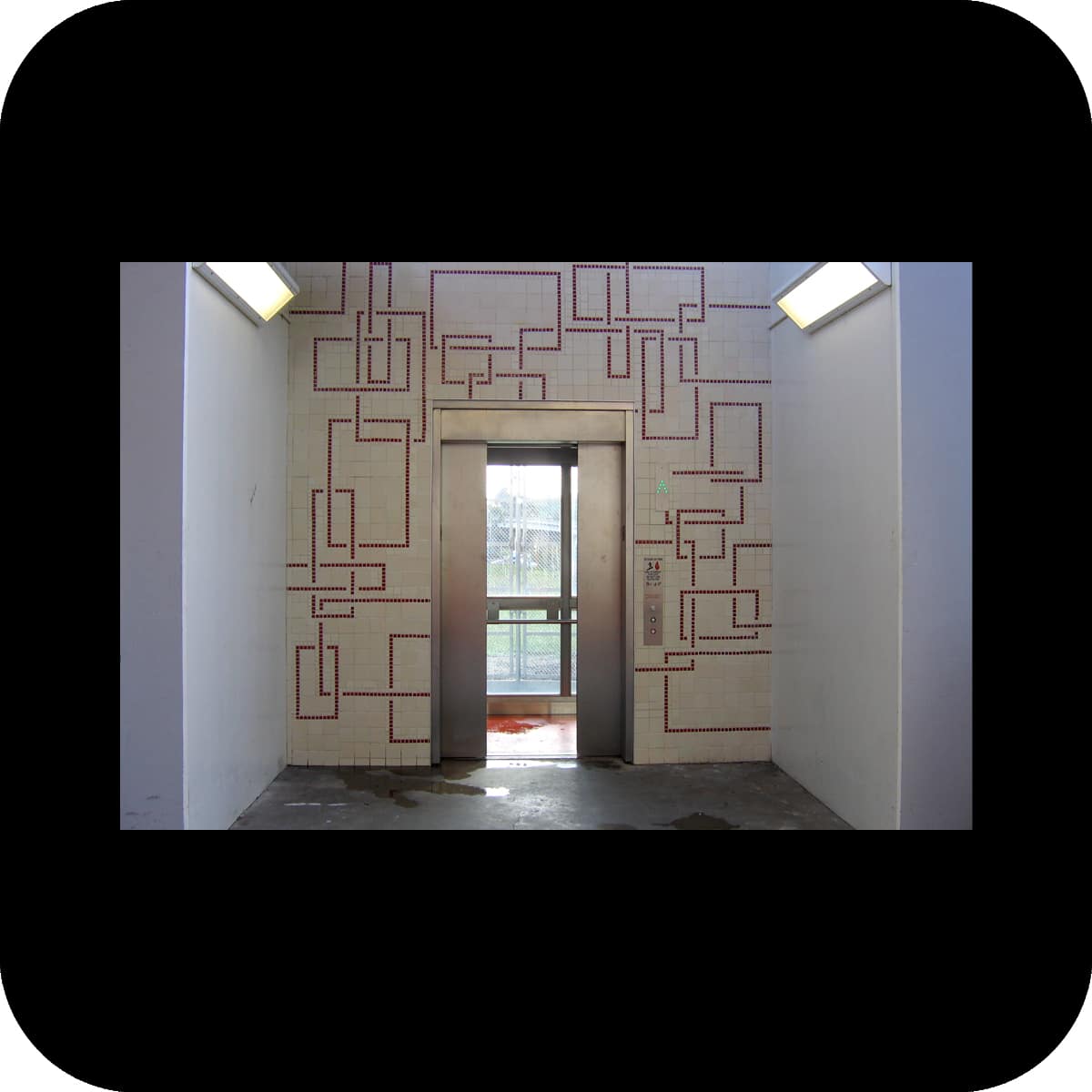8 minutes
8 minutes
permanent public art installation for fire station 24, san jose, ca
client: city of san jose public art program
size: led sign 40’x15”, 2 facades w/ tiles ±22’x30’
led sign fabricator: yesco
tile fabricator: tile artisans
photos: merge
a led sign, connected to the alarm system of the fire station, was integrated into the facade above the fire engine bay. the led sign displays the last eight times the firefighters went on a call. every new emergency call activates the display – a narrow red strip moves across the display changing the background from white to yellow over an eight minute period. when the eight minute cycle is completed, the background color changes back to white, and the time of the most recent emergency is added to the display.
with the activation of the display the public is able to sense the abrupt change in speed of life at the fire station. the timeline becomes a continuously updated record of the firefighters workday, thus making their work more transparent to the public.
in the second part of the artwork, porcelain tiles with applied text and photographs were installed at the exterior entrance foyer of the fire station. these images and text pieces relate the notion of 8 minutes to everyday life outside the fire station.
27 text snippets describe events that typically occur over 8 minutes, some derived from science, others from popular culture or everyday experiences.
time-lapse photographs depict 8 minutes out of the everyday life of 30 local residents. each photograph is composed of 8 images taken from a fixed perspective with one exposure per minute. the background works as a still image while the person depicted follows his/her activities and appears as multiples on the image.



















